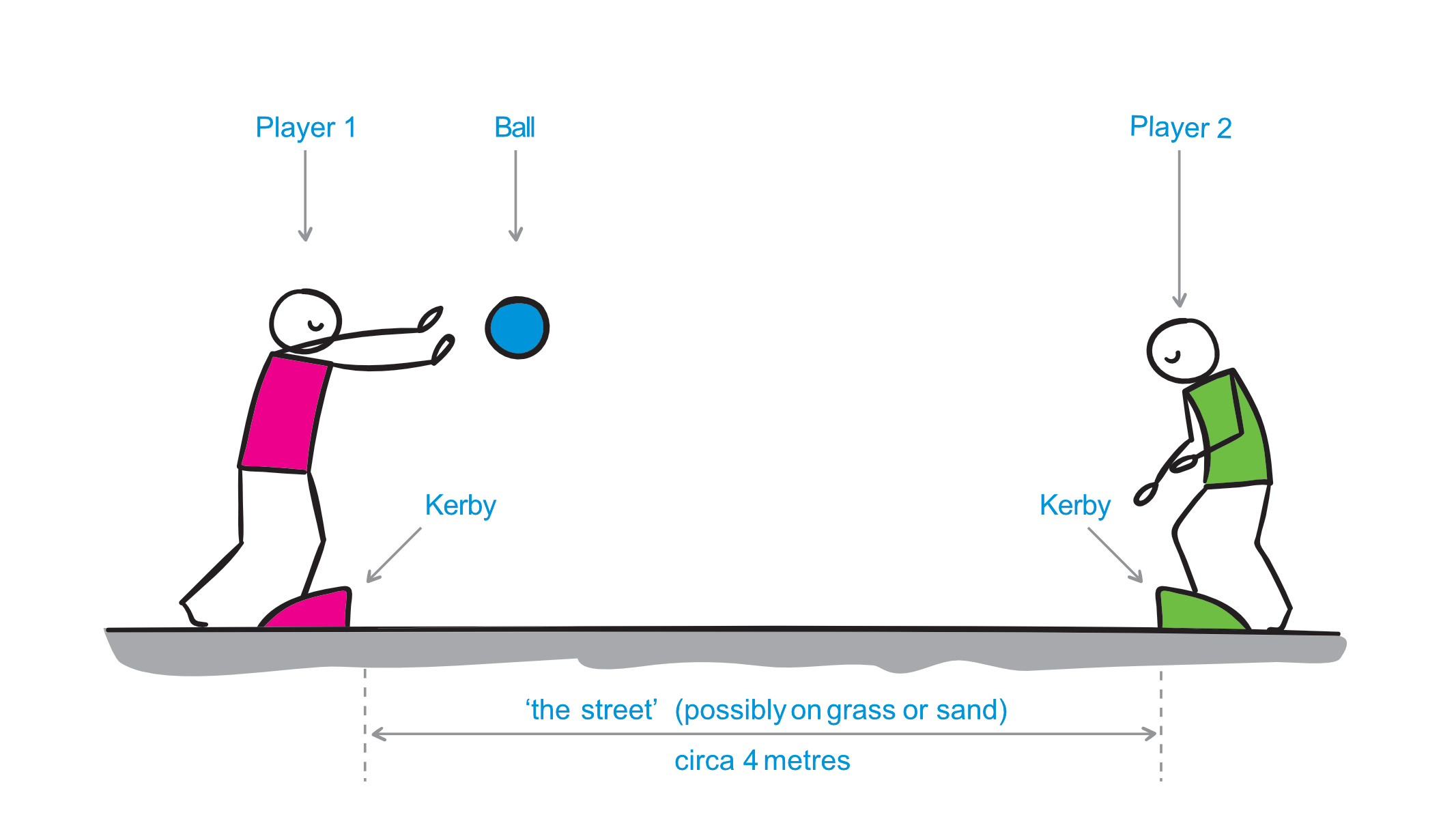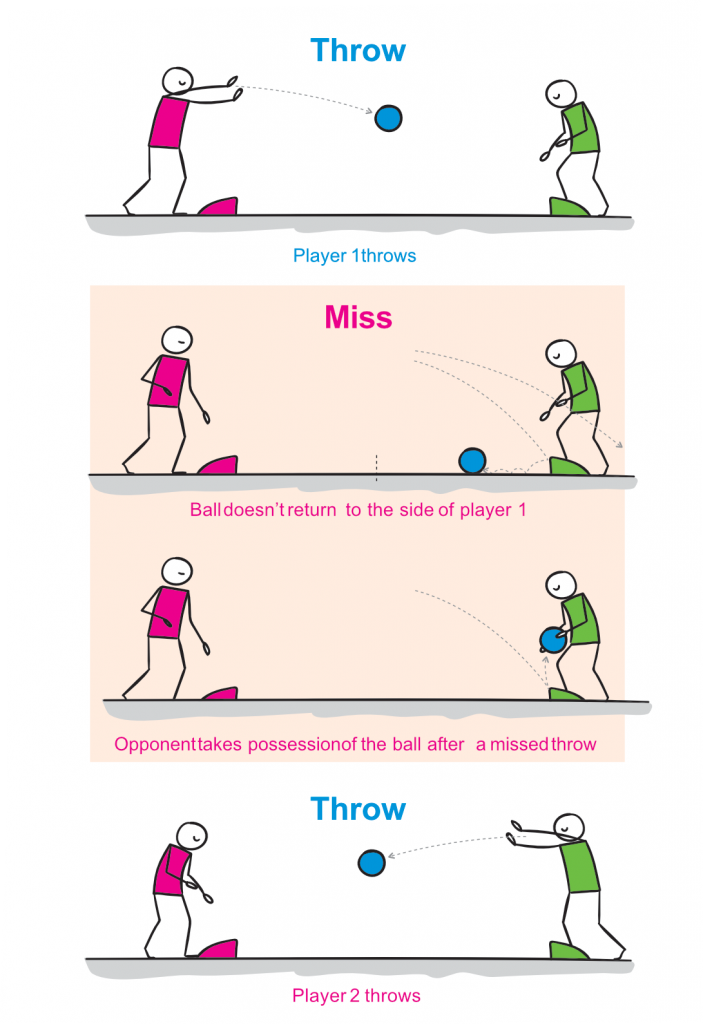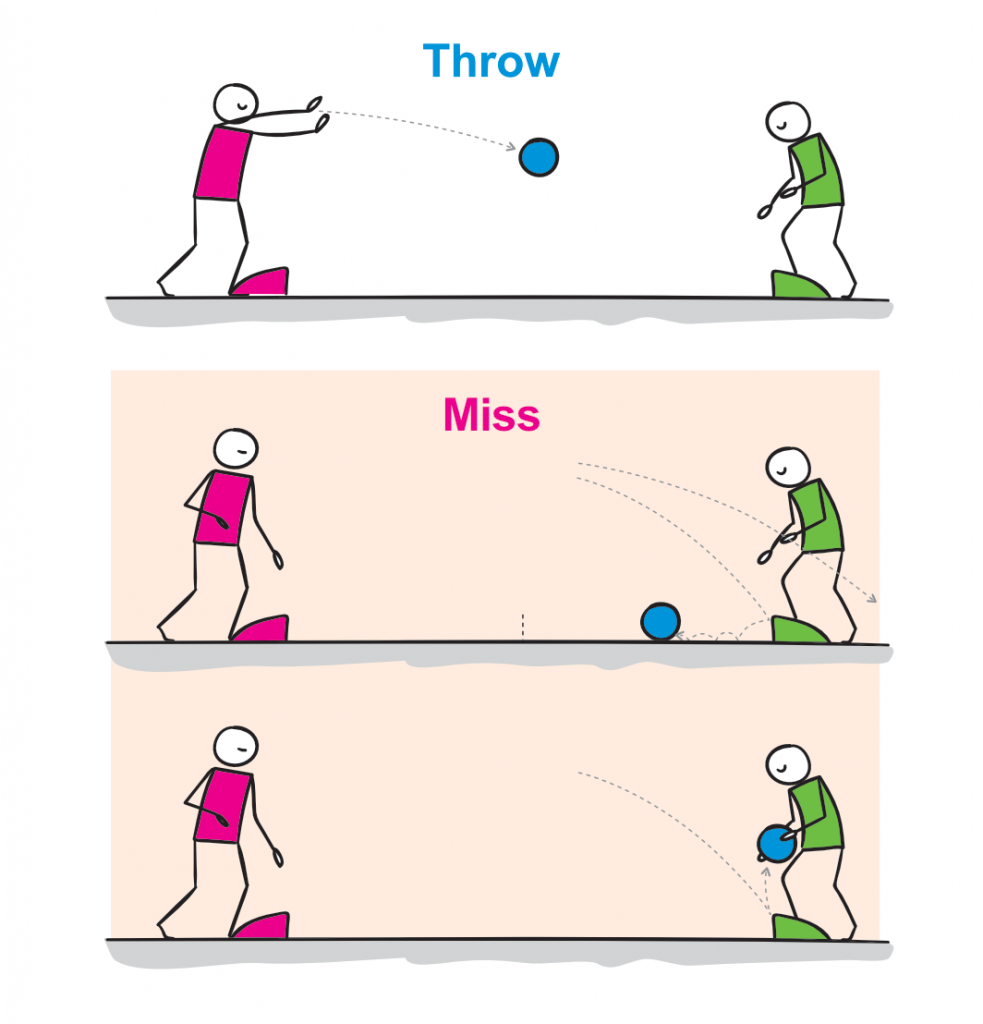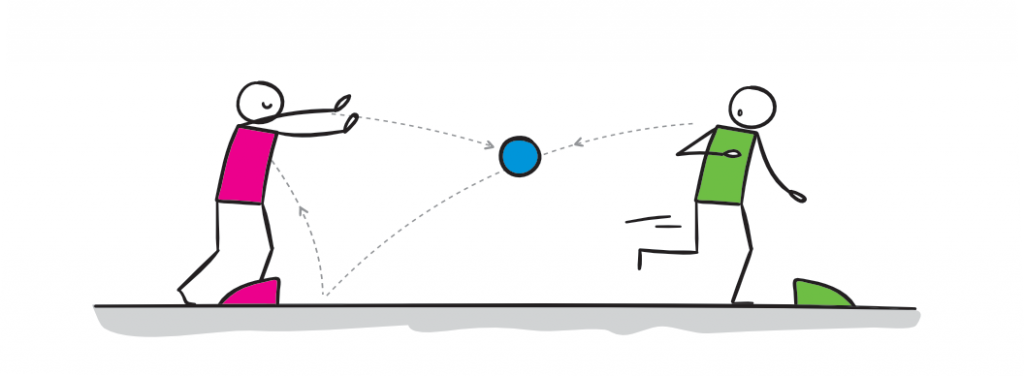Game Rules & Download
Watch the video or the tutorial below for the game rules of Kerby Curbside game.
You can also check out our YouTube channel for more videos about Kerby.
How to Play Kerby

Basics of a Match
Players try to throw the ball with the aim to hit the opponent’s kerby. You score points if you hit the kerby and the ball rolls or bounces back to your half of the street. The first one to score 15 points, with a two-point difference, wins the game. There is an 8-minute time limit. If neither of the players have scored 15 points after 8 minutes, the player with the most points wins.
In order to organise a match you need:
- 1 Ball
- 2 Kerby's
- 2 Participants
- A safe place to play
The distance between the kerby’s is about 4 metres.
Did you know?
That there is a real Kerby Championship in the Netherlands every year!
Every year, dozens of municipalities participate in the preliminary rounds for the Kerby Championship with more than 20 thousand participants.
How cool is that! Kerby is the sponsor of the Kerby Championship that is organized by Jantje Beton.


The Rules
- The player who wins the coin toss starts.
- The player throws the ball from the Kerby towards the opposite side of the street with the goal to hit the kerby .
- The players take turns as long as the ball doesn’t roll or bounce back to the side of the player who has thrown the ball.
- The opposing player is not allowed in front of his/her kerby. When the throw is clearly a miss, the opponent may catch the ball.

Hit your Opponent*
A throw from “the street” is not without risk, as de player can then be hit by his opponent. A player who is hit then loses all his/her points!
- If the player doesn’t hit the kerby and the opponent retrieves the ball, the player can be hit as long as he/she is still on the street. Throwing on the head is forbidden. A throw on the head counts as a missed throw.
- Each attempt at hitting your opponent with the ball counts as a missed throw (since the kerby is not hit). Hence it’s the other player’s turn. You also lose your points if you catch the ball when the opponent is trying to hit you. After all, you have been hit.
- Once the ball hits the opposing kerby and rolls or bounces back to the thrower’s side of the street, the thrower scores 1 point and may throw again from his/her Kerby.
- I the ball returns (after hitting the kerby) through the air, the thrower may try to catch the ball (on his or her side of the street or Kerby). If he/she succeeds, the thrower scores 2 points and can throw again from the place of the catch.
- A player can throw a maximum of three in a row. The turn then goes to the opponent.

How to Count
In this game you can score 0, 1 or 2 points per throw. The players would normally keep track of the score (out loud) themselves. After each game, the players switch half.
0 points
- The player misses; the ball doesn’t hit the kerby on the other side.
- The player hits the kerby, but the ball doesn’t return to the player’s side. The ball doesn’t roll or bounce back \far enough or is caught by the opponent, from his/her own Kerby.

1 points
- The ball hits the kerby and the ball rolls/bounces back to the player’s side, or the ball returns through the air but is not caught. The ball is then thrown again off the Kerby.

2 points
- The ball hits the kerby, the ball returns through the air and is caught on the player’s side of the street or Kerby.
- If the player has caught the ball he/she can throw again from the spot where the ball was caught. This may, however, result in being hit and losing all your points.

Hit by your Opponent
- A player that is hit by his opponent’s ball loses all his /her points and will return to 0 points.

The Winner
The first player to score 15 points with a 2-point difference with his/her opponent, wins. There is an 8-minute time limit. If neither of the players has scored 15 points after 8 minutes, the player with the most points wins.
A Draw
If both players have an equal number of points after 8 minutes, both players can throw three times. The player who scores most points wins. If it is still a draw both players continue to throw once, until there is a one-point difference.

